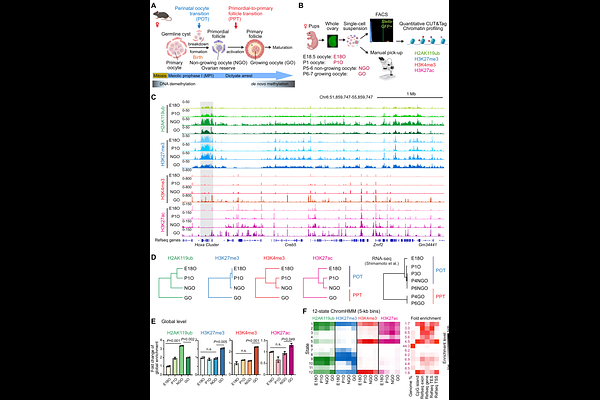An Epigenomic Roadmap Primes Non-Growing Oocytes for Maturation and Early Embryogenesis

An Epigenomic Roadmap Primes Non-Growing Oocytes for Maturation and Early Embryogenesis
Hu, M.; Munakata, Y.; Yeh, Y.-H.; Wang, H.; Hunter, N.; Schultz, R. M.; Namekawa, S. H.
AbstractFemale reproductive lifespan is defined by long-lived, non-growing oocytes (NGOs) that comprise the ovarian reserve. NGOs are assumed to acquire the epigenetic marks that will define the early embryo only after they exit the ovarian reserve and become activated for growth. Contrary to this dogma, we show that mouse NGOs possess abundant histone modifications that both underlie maintenance of the ovarian reserve and prime the epigenome of growing oocytes for early embryogenesis. As NGOs are established around birth, Polycomb Repressive Complex 1 (PRC1) mediates abundant H2AK119 ubiquitylation and reprograms the H3K27 acetylation landscape, which is essential to maintain the ovarian reserve. Importantly, the PRC1-driven epigenetic state of NGOs provides a blueprint for subsequent generation of a PRC2-catalyzed H3K27 trimethylation profile in growing oocytes that is characterized by broad domains and DNA methylation-independent imprints that are transmitted to the embryo. Thus, Polycomb complexes play pivotal roles in priming the NGO epigenome for oocyte maturation and early embryogenesis.